I have a soft spot for places and things nobody living can remember, so here’s another long-forgotten Toledo building lost in a big fire. This time, it was a stubborn three-hour fire on Dec. 21, 1934, that left the long-forgotten Spielbusch Armory in ruins, and left behind only pictures.
Variously known as the Ohio National Guard Armory, the County Armory and the Spielbusch Armory, the building, a landmark in early 20th century downtown Toledo, had “echoed to the tramping feet of soldiers marching to two wars” (Spanish-American, and World War I). Built in 1891, it was at Spielbusch Ave. and Orange Street, though Google Maps tells me that stretch of Orange Street is now called “Constitution Avenue?”
The fire kindled memories of the city’s boys going off to war at the News-Bee, and they took time to reminisce further:
Like a wicked ogre, it had swallowed up hundreds of the city’s finest young men in the days of the Spanish-American and World Wars.
Into it they had marched with mingled feelings of sorrow and expectation – sad at leaving their relatives, expectant for the adventures which were offered by the vaunted glamor of war…
Since the war, the Armory has figured in the news on a number of occasions. Hundreds of men were examined in the building last year for services in the Civilian Conservation Corps and sent from there to camps in all parts of the country…
In the spring of 1934, the Armory assumed another and final tragic role. Troops from nearby towns assembled there on a rainy morning to do strike duty at the Auto-Lite factory.
The fire department and the Ohio National Guard differed on the cause of the fire. Fire Chief Fred Myers blamed a disgarded “cigaret” carelessly tossed under a wooden platform after a wrestling match. The ONG blamed defective wiring.
According to the News-Bee, the Herley Athletic Club put on the previous night’s show. “In one of the double main event bouts, Sailor Moran, rugged California rough-and-tumble artist, will take on Buck Weaver, the clever ex-football player from the University of Indiana, and in the other, Les Fishbaugh, sturdy Newark cobbler, tangles with Andy Tremaine, popular Tucson tussler,” the News-Bee wrote. Fishbaugh and Weaver won their matches, if you’re interested (just reading the description of the matches, professional wrestling evidently hasn’t changed much).
The building was not rebuilt, and activities at the burnt-out armory shifted to the armory at Bay View Park, which was under construction at the time.
Some cool pictures came of it, however.
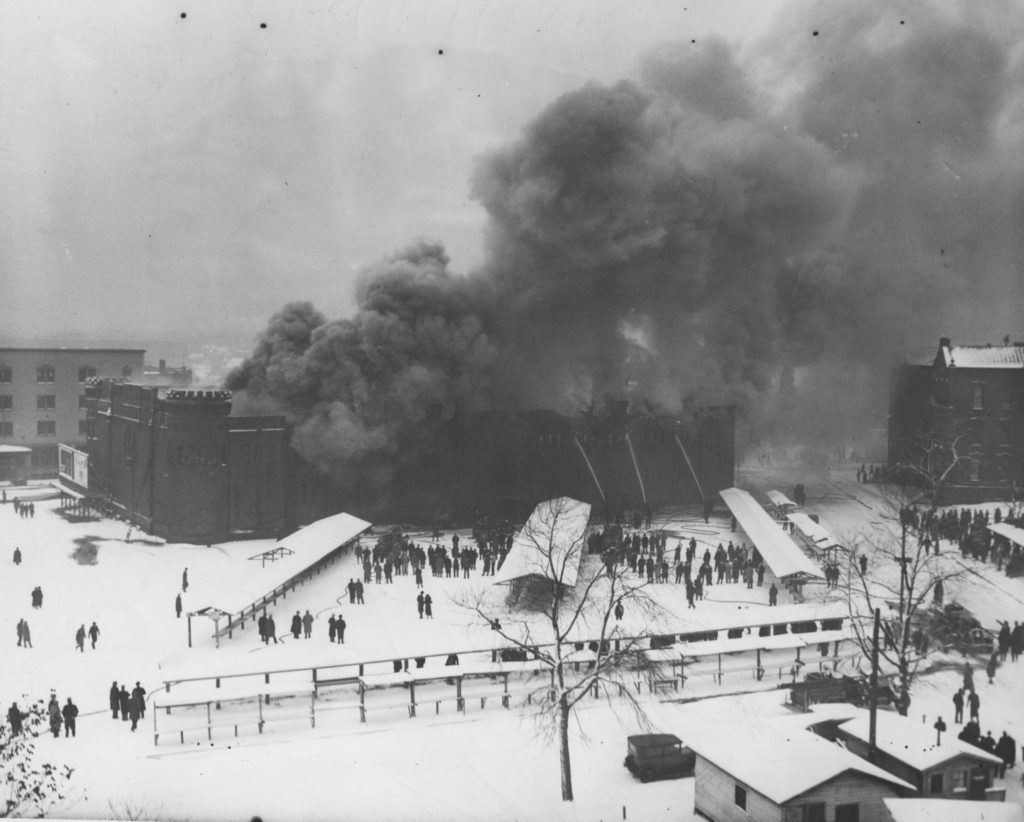
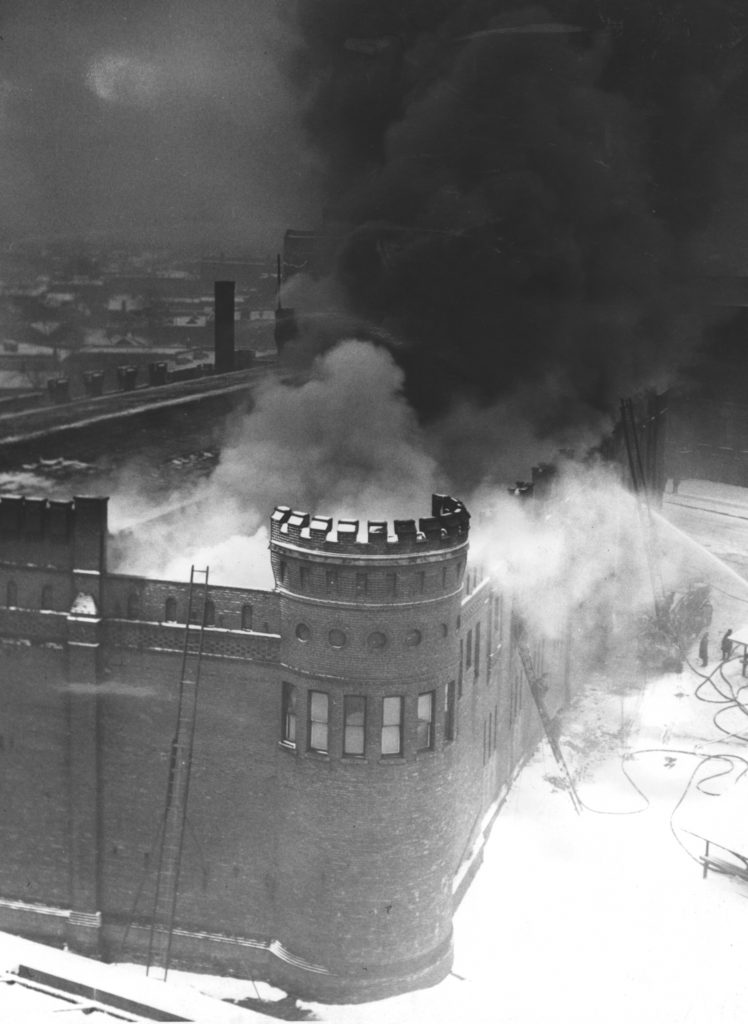
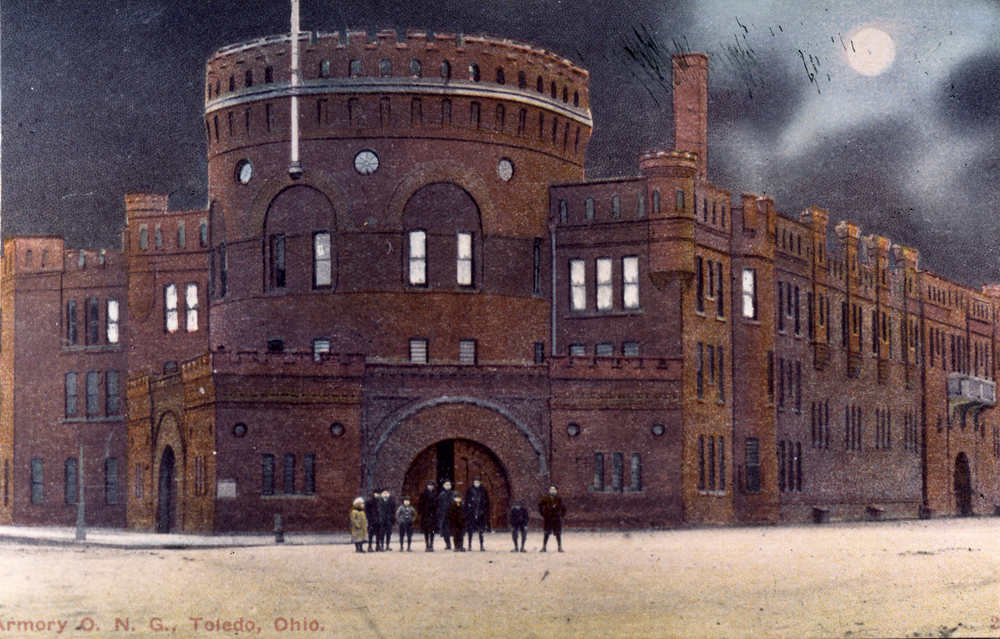
http://utdr.utoledo.edu/local-history-files/173
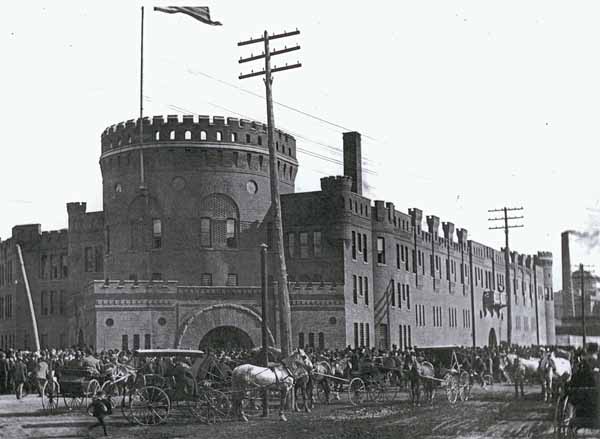
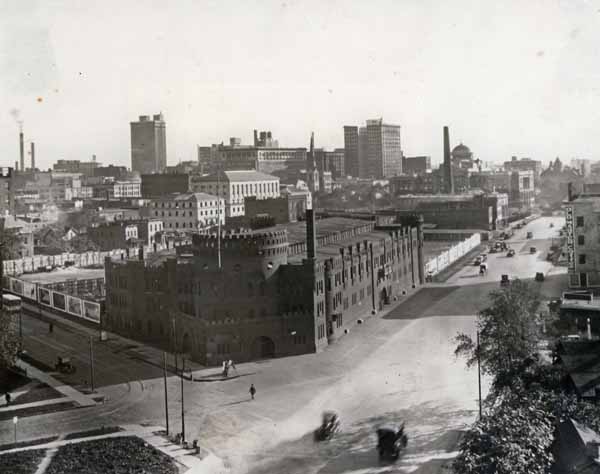
Worth noting: next to the Armory was the aptly-named Armory Park, which served as Toledo’s first real baseball park from 1897 to 1909. Its opening “ushered in an era of new-found stability for the national pastime in Toledo,” according to this interesting article from the Society for American Baseball Research.
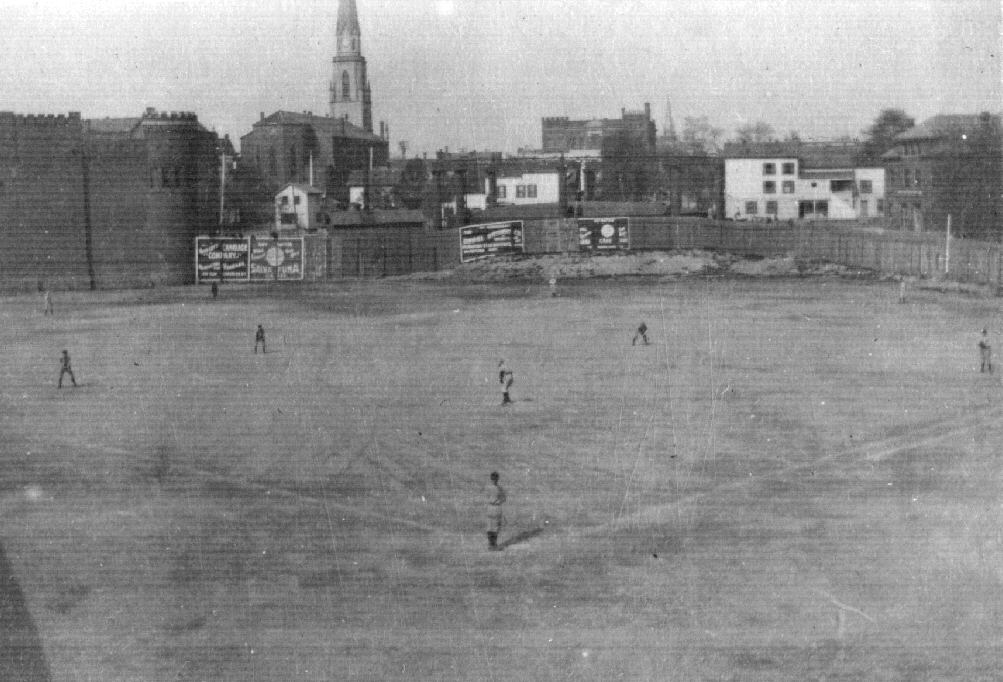
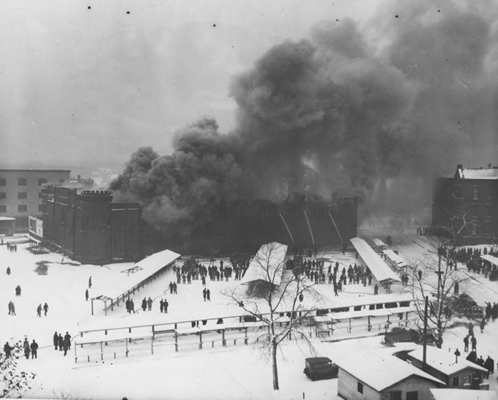
WONDERFUL ARTICLE. Love history and especially Toledo History. I am also doing some research on Toledo subjects and will use (and credit) parts of your article. Thanks for the memories!!
This is a fabulous collection of photos of the old Armory in Toledo, esp. the views of Armory Park which holds a special interest for me because of my work on the American Association. Because the park had a short right field, it was considered a hitter’s park. In fact, the 1903 Toledo Mud Hens, which played 69 of its 142 games at Armory Park, led the league with 65 home runs but finished in 8th place. I wonder what it must have been like to sit in the grandstand there and watch a game. This would have been where the Mud Hens played when my maternal grandmother was born in 1904 in Marquette, Michigan. She would re-locate to Milan, Michigan, less than an hour north of Toledo on Hwy. 23. Her twin sister was married to a man who had some kind of unofficial active role with the Mud Hens, but despite my research and contact with family members I have never been able to ascertain this. He does not appear in any of the roster listings for the team, but it’s possible he knew players for the Mud Hens through his long association with semi-pro baseball in southeastern Michigan. He is the one, who we called Uncle Teed, who I give credit to for my interest in the old American Association which I’ve been writing about for nearly 20 years.
I wish there was a way to superimpose a old map of Toledo on top of a current map.
I never knew there was an Armory there until saw the episode of Toledo Stories on PBS about the
Mud Hens.
As an added bit of information to grand old lady of a building, the Toledo O.N.G. Armory (there were many throughout Ohio), the Armory used to also house many athletic functions, including early 20th century indoor athletic “carnivals” featuring many Toledo’s early track and field stars of those years.